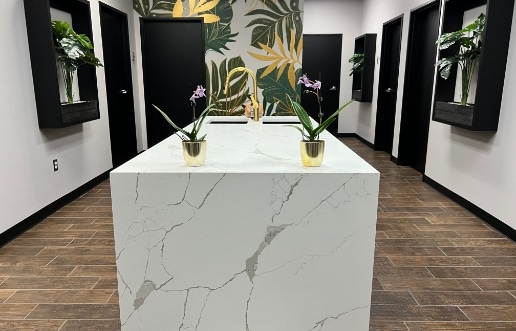Imagine a treatment approach where cutting-edge technology meets hands-on therapeutic techniques. Laser therapy and physical therapy join forces to provide an integrated approach to healing, offering patients faster recovery times, reduced pain, increased mobility, and improved overall well-being.
Understanding Laser Therapy: How it Works and its Benefits
Laser therapy is a cutting-edge treatment that has gained popularity in recent years for its ability to provide relief from various musculoskeletal conditions. But how does it actually work, and what benefits does it offer? At its core, laser therapy utilizes light energy to stimulate the body’s natural healing processes. The high-intensity light waves target specific areas of tissue damage or inflammation, penetrating deep into the skin without causing any discomfort. This targeted approach allows for precise treatment and faster recovery times.
One of the key benefits of laser therapy is its ability to reduce pain and inflammation. By stimulating blood flow and increasing oxygenation in the affected area, laser therapy helps to alleviate discomfort and promote healing at a cellular level. In addition to pain relief, laser therapy also has positive effects on tissue repair and regeneration. It stimulates collagen production, which plays a crucial role in maintaining healthy connective tissues such as tendons and ligaments. Moreover, laser therapy can enhance muscle function by reducing muscle spasms and improving range of motion. This makes it an ideal treatment option for athletes dealing with injuries or individuals recovering from surgery.
The Advantages of Physical Therapy in Conjunction with Laser Therapy
Combining physical therapy with laser therapy can provide numerous advantages for patients seeking comprehensive and effective treatment. These two therapies work together synergistically to promote faster healing, reduce pain, and improve overall function.
Physical therapy focuses on restoring mobility, strength, and flexibility through targeted exercises and techniques. By incorporating laser therapy into the treatment plan, therapists can enhance the effectiveness of these exercises. The low-level laser energy stimulates cellular activity in injured tissues, promoting faster healing and reducing inflammation. This means that patients may experience improved results from their physical therapy sessions when combined with laser therapy.
Another advantage of combining these therapies is that they can target different aspects of a condition or injury simultaneously. Physical therapy addresses musculoskeletal issues such as muscle imbalances or joint dysfunction, while laser therapy targets deeper tissues at a cellular level. Additionally, the combination of physical and laser therapies allows for a more holistic approach to rehabilitation. Physical therapists use manual techniques to correct alignment issues or release tight muscles, while laser therapy provides non-invasive pain relief by reducing inflammation and stimulating tissue repair.
Moreover, this combined approach can help accelerate recovery time for various conditions such as sports injuries, arthritis pain management, post-surgical rehabilitation, or chronic pain syndromes. Whether it’s rehabilitating after orthopedic surgery or managing chronic back pain caused by disc degeneration – this powerful combination has shown promising results.
Please reach out to our practice in Wyandotte, MI, to have a consultation with our doctor, Dr. Abrahamson. Please call us at (734) 287-3000 or schedule an online consultation, and we’ll guide you further.






